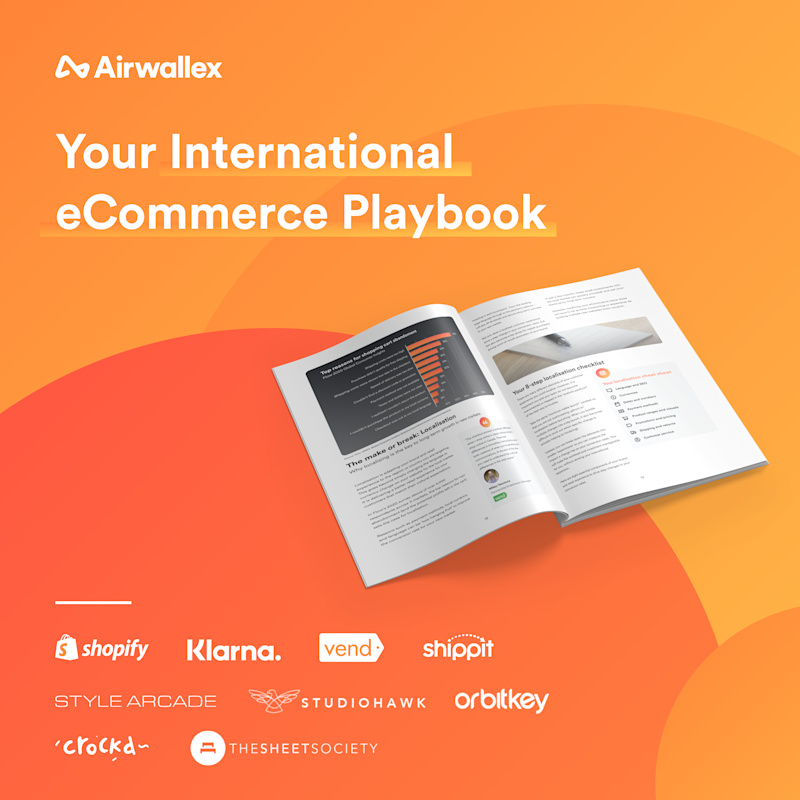The best D2C platforms for international eCommerce

The importance of D2C
In recent years, even the most tech-adverse among us have embraced shopping platforms like Shopify, Woocommerce, Magento and others to easily shop online. This surge has been especially strong since last year, during which the COVID-19 pandemic caused many people to stay at home.
A recent study revealed that eCommerce growth was up over 80% year over year in the first 8 weeks of the pandemic. Many consumers who had never shopped online before discovered the convenience and ease of having goods delivered directly to your door. This has created a new market for online shoppers that many eCommerce retailers are eager to seize.
What is a D2C Platform?
D2C or direct-to-consumer platforms allow enterprises to market and sell their products directly to their customers, eliminating the need for any intermediaries. The difference between B2C and D2C is that in B2C, manufacturers usually rely on retailers (like Amazon) to sell their products.
With research suggesting that 55% of consumers prefer to shop directly from brand manufacturers over retailers, it’s not difficult to understand why D2C is dominating the market.
What should one look for in a great eCommerce platform?
1. Access to international markets
If you want to create a globally equipped eCommerce site, your D2C platform needs to be compatible with your target countries. A great D2C platform has access to international markets as well as a presence among the customer demographics in those different countries.
eCommerce platforms make money when their customers make money. Therefore, the Gross Merchandise Value (GMV) of an eCommerce platform indicates its current market size and how well the customers’ businesses are flourishing. Shopify, for example, has merchants in 175 nations and Gross Merchandise Value (GMV) of US$175.4 billion internationally as of 2021.

2. Powerful add-ons and integrations
The top eCommerce platforms usually have a dedicated app store supporting more than 1,000 third-party integrations, plugins, and extensions. These integrations and plugins make it possible to streamline your orders, shipping, promotions and user experience with automation and require little to no management.
Magneto has the ability to communicate with over 140 API integrations, making the manufacturer-to-consumer transaction easier.
3. Affordability
There isn’t a one-size-fits-all to how much it would cost to build and host an eCommerce website. At the lower end, eCommerce platforms offer services starting from USD 20 to USD 30 a month. A custom eCommerce system may cost around USD 300 per month.
Depending on your choice of the shipping carrier, your cost of shipping will vary. Additionally, eCommerce platforms also charge transaction fees and credit card rates. Therefore, analyse if a D2C platform charges any hidden fees after you subscribe to their service.
Now that you understand how to pick the best eCommerce platform for your business, here are the top three best online selling sites in Australia.
Best D2C eCommerce Platforms
Shopify

Perhaps the most recognizable eCommerce platform, Shopify is the largest eCommerce-only platform with more than 4.4 million merchants in 175 countries, with a reported GMV of US$175.4 billion in 2021. It supports multiple languages and lets you ship your products to around 133 countries.
The platform provides small and medium-sized businesses with powerful back-office functions and a single overview of their transactions, making every aspect easy to manage and update. Shopify is also used by big names such as Tesla, Budweiser, Red Bull and the New York Stock Exchange.
It is highly flexible and user-friendly, with more than 3000 third-party integration and plugins available. It has an intuitive dashboard that makes it easy to manage and control your store without any technical knowledge.
To open up international storefronts, you will either have to get a different domain or create a subdomain for each region. If you plan to sell your products in more than a handful of countries, go for Shopify Plus.
WooCommerce

WooCommerce is a WordPress plugin that powers 28% of all online stores. WooCommerce’s GMV passed USD 11.8 billion in 2019.
It offers 750 extensions and 81 payment gateways that you can choose from and integrate with, including choices like PayPal, Google Pay, Stripe, AmazonPay, Square, and Apple Pay.
It’s notably easy to use and manage, as well as cost-efficient. There is no cost to use the platform, although the additional paid features are worth the investment. The paid plugins and add-ons, such as one-page checkout, automated email marketing through MailChimp and translation services, are a great value add.
Magento (Adobe Commerce)

Finally, Magento is another eCommerce platform that offers full customisability and a range of solutions for businesses of different sizes and industries. Parent company Adobe Inc reported strong 5% year on year growth to USD $826 million for 2020’s fiscal second quarter for its digital experience segment, which includes Magento.
While Magento powers only about 1% of all top global CMS (Content Management Systems) sites, it is used by many high-end and multinational companies like Bulgari, Land Rover and Fred Perry.
What platform should you use?
The global platform your D2C eCommerce store decides to choose depends largely on your needs, goals and technical abilities.
WooCommerce is ideal for WordPress-based eCommerce websites. WooCommerce is ideal for those D2C manufacturers that are comfortable working with WordPress and want to minimize expenses on their shopping platform.
Shopify, however, is ideal for those entrepreneurs who don’t want to spend a large amount of time dealing with the technical aspects of setting up an online store. Shopify is easy to use and offers a high level of customer support, which could be helpful for first time eCommerce stores in the eCommerce realm. Of course, this comes with a price and a higher monthly subscription fee, depending on the services used.
Magento is perfectly tailored for developers who want to have the freedom to add their code and tweaks to their website pages without being restricted to a predetermined template or layout. It’s also a good choice for companies that have professional web developers on the payroll because the platform is highly customizable for those with coding skills.
How to get started in D2C?
Before you choose the ideal shopping platform for your D2C business, it’s important to first take these important steps to get started in the eCommerce industry.
Do market research
It can be challenging to completely revamp your existing technology, services and products to fit the needs of your domestic market. Thankfully, international trade has become easier than ever due to eCommerce.
Today, the international trading market is the most liquid asset market in the world, with a total value seventeen times greater in 2019 than global GDP. International expansion has never been simpler, and the opportunities are ample. Identify the most valuable market for the product or service you currently offer and go from there. Today it is relatively easy to create a website and arrange marketing, shipping and payment options for your ideal customer demographic.
Validate new markets with test launches
Of course, the biggest mistake you can make as an entrepreneur is investing a lot of money and time into an idea that is doomed from the beginning. Through low-cost experimentation, you can roll out soft launches of your product in your target market to understand how your brand resonates with consumers, and adapt accordingly.

How does Airwallex help D2C eCommerce go global?
Airwallex helps D2C eCommerce businesses be international from day one with a truly global business account. Airwallex achieves this by making it seamless for you to collect, hold, convert and pay in your currency of choice - without the expensive FX fees.
To put things into context, your FX fees could add up to $5,000 on a $100,000 international transaction. $5,000 that you could be re-investing into growing your business.
This happens where most major banks charge an average of 3 - 5% on FX, as compared to Airwallex is as low as 0.3% on major currencies. To see these rates first hand, check out the Airwallex Currency Conversion Calculator here.
Related article: The Best Payment Gateways for International eCommerce
Our products and services are provided by Airwallex Pty Ltd ABN 37 609 653 312 who holds AFSL 487221 (Airwallex). This article is provided for general information purposes only and is correct at the time of publication but may change. This article does not take into account your objectives, financial situation or needs. Airwallex is not providing you with any legal, financial or tax advice. You should consider the appropriateness of the information in light of your own objectives, financial situation or needs and obtain your own legal, financial or tax advice. Please read and consider the Product Disclosure Statement available on our website before using our service.


